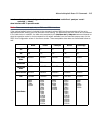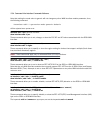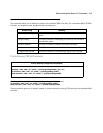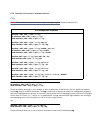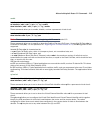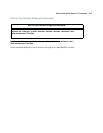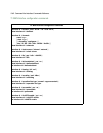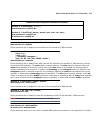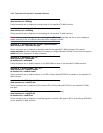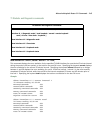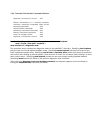
Motorola Netopia® Router CLI Commands 2-59
enable
interface { adsl | sdsl } id pvc { id | tag } enable { yes | no }
no interface { adsl | sdsl } id pvc { id | tag } enable
show interface { adsl | sdsl } id pvc { id | tag } enable
These commands allow you to enable, disable, or show a permanent virtual circuit.
interface adsl id pvc { id | tag } qos { ubr | cbr | vbr }
show interface adsl id pvc { id | tag } qos
Note: These commands are supported beginning with Firmware Version 8.2.
These commands allow you to specify or show the Quality of Service (QoS) type – Unspecified Bit Rate (ubr) or
Constant Bit rate (cbr) – for the specified PVC. Beginning with Firmware Version 8.3.3, the vbr argument is also
supported.
Variable Bit Rate (vbr) is characterized by:
• a pcr (Peak Cell Rate) value, which is a temporary burst, not a sustained rate, and
• an scr (Sustained Cell Rate) value, and
• an mbs (Maximum Burst Size/Burst Tolerance) value. mbs is the maximum number of cells that can be
transmitted at the peak cell rate and should be less than, or equal to the Peak Cell Rate, which should be less
than, or equal to the line rate.
VBR has two sub-classes:
a. VBR non-real-time (VBR-nrt): Typical applications are non-real-time traffic, such as IP data traffic. This class
yields a fair amount of Cell Delay Variation (CDV).
b. VBR real time (VBR-rt): Typical applications are real-time traffic, such as compressed voice over IP and video
conferencing. This class transmits cells with a more tightly bounded Cell Delay Variation. The applications follow
CBR.
vpi and vci
interface { adsl | sdsl } id pvc { id | tag } vpi vpi-val
show interface { adsl | sdsl } id pvc { id | tag } vpi
These commands allow you to set or show the Virtual Path Identifier value vpi for a permanent virtual circuit.
interface { adsl | sdsl } id pvc { id | tag } vci vci-val
show interface { adsl | sdsl } id pvc { id | tag } vci
These commands allow you to set or show the Virtual Channel Identifier value vci for a permanent virtual
circuit.
The vpi and vci allow you to configure the Virtual Path Identifier and Virtual Channel Identifier which together
identify the ATM permanent virtual circuit used between the router and the remote device. The values
configured for these items must match those configured in the remote device for data to flow between the
devices. The vpi may be set to any value between zero (0) and 255.





